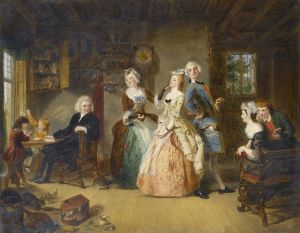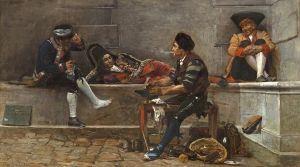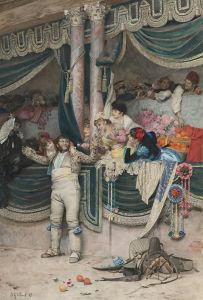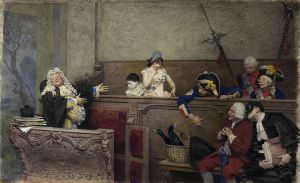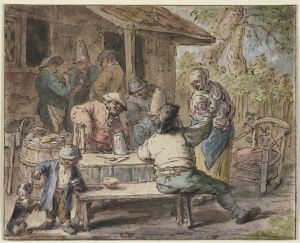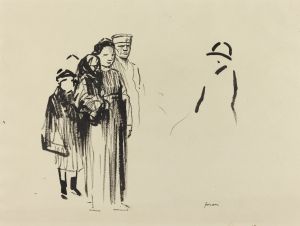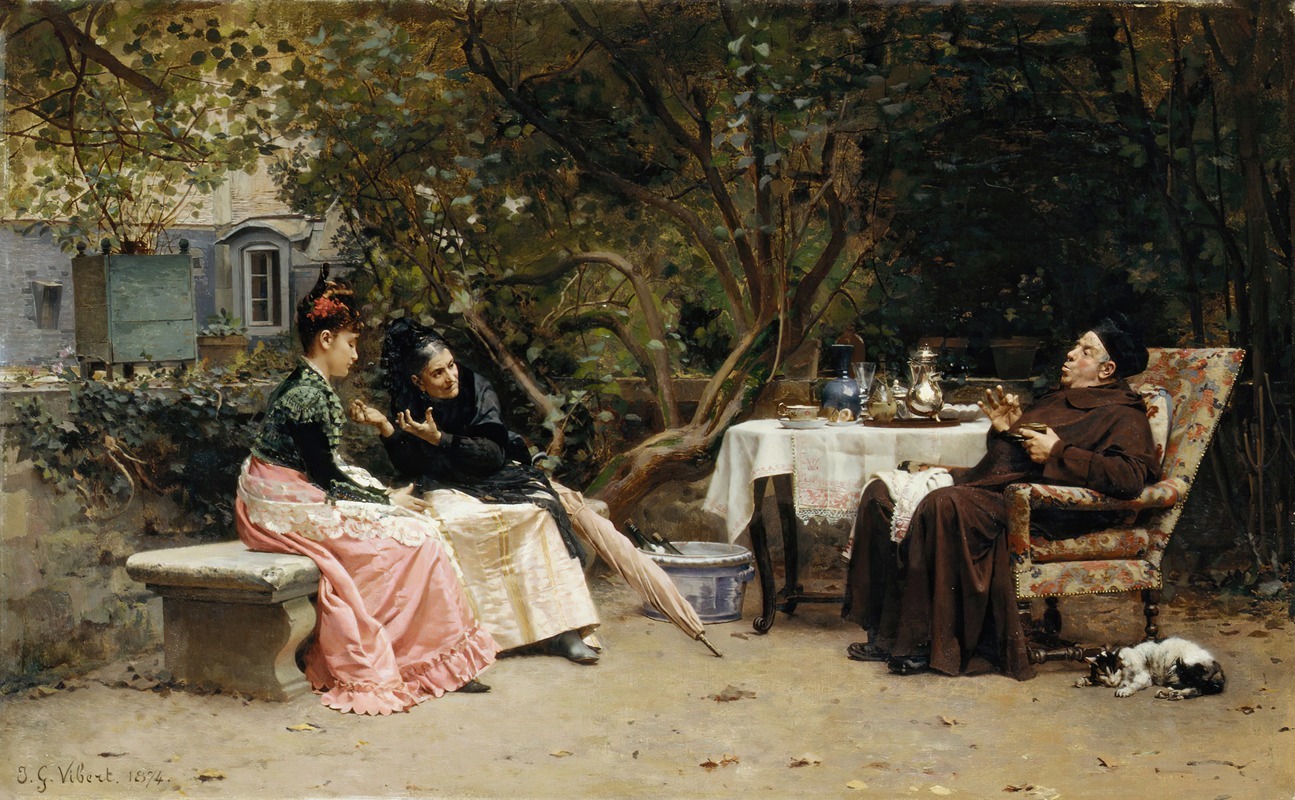
The Reprimand
A hand-painted replica of Jehan Georges Vibert’s masterpiece The Reprimand, meticulously crafted by professional artists to capture the true essence of the original. Each piece is created with museum-quality canvas and rare mineral pigments, carefully painted by experienced artists with delicate brushstrokes and rich, layered colors to perfectly recreate the texture of the original artwork. Unlike machine-printed reproductions, this hand-painted version brings the painting to life, infused with the artist’s emotions and skill in every stroke. Whether for personal collection or home decoration, it instantly elevates the artistic atmosphere of any space.
Jehan Georges Vibert (1840-1902) was a French academic painter known for his satirical and often humorous depictions of clergy and other figures. One of his notable works is "The Reprimand," which exemplifies his skill in capturing detailed expressions and intricate settings.
"The Reprimand" is an oil painting that showcases Vibert's characteristic style of combining realism with a touch of satire. The painting depicts a scene involving two clergymen, one of whom appears to be reprimanding the other. The setting is an opulent interior, likely a room within a church or a bishop's residence, adorned with luxurious furnishings and religious artifacts. The attention to detail in the textures of the fabrics, the sheen of the polished wood, and the intricate patterns of the wallpaper highlights Vibert's technical prowess.
The central figures in the painting are dressed in traditional clerical attire, with the reprimanding clergyman wearing a stern expression, while the other appears to be listening attentively, perhaps with a hint of remorse or defensiveness. This interaction is the focal point of the composition, drawing the viewer's attention to the dynamics of authority and obedience within the ecclesiastical hierarchy.
Vibert's work often included subtle critiques of the church and its officials, and "The Reprimand" is no exception. Through the meticulous rendering of the characters and their surroundings, Vibert invites the viewer to consider the human aspects of religious figures, portraying them as individuals with their own flaws and emotions rather than as idealized icons.
The painting reflects the broader context of 19th-century French art, where there was a growing interest in realism and the depiction of everyday life, even within the confines of religious and historical subjects. Vibert's ability to blend humor with a keen observation of human nature made his works popular among contemporary audiences and collectors.
"The Reprimand" is part of Vibert's larger body of work that often explored themes of power, authority, and the human condition through the lens of religious and historical settings. His paintings were well-received during his lifetime, and he exhibited regularly at the Paris Salon, where he gained recognition for his distinctive approach and technical skill.
Today, Jehan Georges Vibert's works, including "The Reprimand," are appreciated for their artistic merit and their insightful commentary on the society of his time. His paintings can be found in various museums and private collections, continuing to captivate viewers with their blend of realism, satire, and meticulous detail.





